#I love it when gollum talks about middle-earth lore
Photo
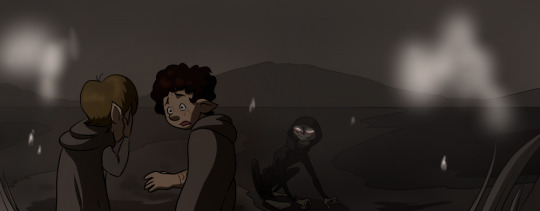
Tolkientober: history
(Prompt list is here!)
sam: gollum why are we surrounded by lights
gollum: don’t look at those they are corpse lights. where’s frodo, by the way
frodo: there are dead people in the water
sam: why are there dead people in the water
gollum: lol. what did i just say about the lights
sam: why are there dead people in the water
gollum:
gollum: WHEN I WAS A YOUNG WARTHOG~
sam: why are there dead people in the water
gollum: back when i was cute someone told me a lot of people died here
sam: why are they still here?!
gollum: once i tried to eat the dead people in the water :3c
sam: maybe we should just go
#tolkientober#tolkientober2021#frodo baggins#samwise gamgee#gollum#lotr fanart#I love it when gollum talks about middle-earth lore#frodo: how else can we get into mordor#gollum: so let me reveal that i could talk normally this whole time if i wanted to by monologuing about saurons plans for five minutes#most precious catboy#indestructible fluffy short people
41 notes
·
View notes
Text
Vice and Virtue in Tolkien’s Works
I’ve been rereading Dante’s Purgatorio (easily my favourite of the three sections, both for having a very satisfying structure and for its themes of repentance and reform), and the structure inspired this post. Each level of purgatory has images, words, or both, associated with the vice being reformed and its corresponding virtue (the examples being drawn both from the Bible and Greco-Roman history and mythology) and it gave me ideas for a discussion of similar themes in Tolkien’s works.
The structure is: 1) Pride/Humility; 2) Envy/Generosity of Spirit; 3) Wrath/Charity; 4) Sloth/Zeal); 5) Avarice/Simplicity; 6) Gluttony/Abstinence; 7) Lust/Romantic Love.
1) Pride/Humility
Saruman: Our time is at hand: the world of Men, which we must rule. But we must have power, power to order all things as we will, for that good which only the Wise can see.
Frodo: I will take the Ring, though I do not know the way.
This is easily the primary emphasis in Tolkien’s works. The fall of all his main villains (Morgoth, Sauron, Fëanor, the Númenoreans, Saruman) and as well as other non-villainous tragic characters (Túrin, Thingol, Turgon, Thorin, Denethor) is characterized by pride - the desire to be the one calling the shots, the desire for greatness and others’ recognition of that greatness, the refusal to listen to the advice or views of others.
It’s there in Melkor’s desire for his theme to be the only one heard in the Music; in Sauron’s desire to rule the world and arrange everything as he thinks best; in Fëanor’s determination to take any advice, correction, or disagreement as a personal attack, his desire for rulership in Middle-earth, and his attitude that the Silmarils are more important than anything anyone else has done or created; the late-stage Númenoreans’ campaign of imperialist conquest. It’s there in Túrin’s, Thingol’s, and Turgon’s rejection of good advice; in Thingol’s attitude towards other peoples, whether it’s Beren or the dwarves; in Denethor’s conviction that Gondor is the only place and people of any account in the war against Sauron.
Humility, in contrast, is mainly seen in the form of hobbits. None of them have any idea what they’re doing when they leave Rivendell (Sam and Pippin don’t even know where Mordor is), and they know they’ve got no idea. They’re not going because they see themselves as specially skilled or qualified, but because it needs to be done. And that’s the very reason Frodo can resist the Ring so long, and Sam can resist it, because they don’t have any grand ideas of themselves.
The ability to say I don’t know what I’m doing, but I’ll try to do what’s right is pretty crucial to humility; even members of the Fellowship who are far more experienced, skilled and knowledgeable than the hobbits show it. Aragorn says it, in the search for Merry and Pippin when they’re captured by orcs. Pride could easily say I need to go with the Ring-bearer, that’s the most important task or I need to go to Gondor and lead the war against Sauron as their King. But Aragorn lets himself trust in other people doing their parts, and focuses on rescuing his companions - the thing that no one else is a available to do - even as the chase seems increasingly hopeless. It’s also seen in Gandalf, who openly admitted he was scared to go when the Valar first sent him, and wandered around as an old man in a battered cloak and hat, talking with everyone, rather than setting himself up as a Respectable Dignified Authority Figure the way Saruman did.
The Silmarillion has fewer examples of humility than LOTR (perhaps why things turn out so much worse there) but there are a few in the Leithian. Lúthien is another case of saying I don’t know what I’m doing, but I’ll do it because no one else will when she sets off to rescue Beren. Finrod walks away from his crown and realm to help a friend.
2) Envy/Generosity of Spirit
Denethor: I will not step down to be the dotatd chamberlain of an upstart.
Faramir: My lord, you called me. I come. What does the king command?
Envy is akin to pride, but I’m characterizing it as being specifically the resentment of being surpassed (or even equalled) by another.
Fëanor is again a major example of this, specifically in his resentment of Fingolfin and of the descendents of Indis more generally. Peoples of Middle-earth notes that he resented the name Nolofinwë (Fingolfin’s Quenya name, roughly means ‘wise-Finwë or ‘learned-Finwë’) due to regarding himself as not only the most skilled of the Noldor at craftwork (which he was), but also the most skilled at lore/scholarship (which he wasn’t), and likewise resented the name Arafinwë (Finarfin’s Quenya name). He’s in a mental place of resenting anything positive that can be said about his brothers as if it inherently detracts from him. And he takes the same attitude towards Men (‘No other race shall oust us!’), treating their very existence as a threat to the Eldar. Losgar is the peak of this: he’s willing to sabotage his own war effort to prevent Fingolfin from participating. This is contasted with Maedhros’ attitude after being rescued by Fingon, when he willingly gives up the crown and, later, moves across Beleriand to the most exposed section of the northern border to avoid conflict. His own status isn’t his priority; peace with his family and the best interests of the war against Morgoth are his priorities.
Denethor is another major example, seeing both Aragorn’s return and Faramir’s respect for Gandalf as personal affronts to himself. (Gandalf points out that the literal job description of a steward is to be in charge until the king returns. When the king comes back, that means you’ve done your job, not that you’re being demoted. Denethor is not interested in hearing this.) He’s also mentioned in the Appendices to have resented the respect and admiration recieved by Thorongil [i.e. Aragorn in disguise] during the days of their youth. In very similar ways, Saruman resented the high regard that some (like Galadriel) had for Gandalf, and saw Gandalf as a rival. Thorongil and Gandalf were not interested in rivalry; they were more interested in what was achieved than in who was achieving it. Faramir is the contrast here - he is interested in the good of Gondor, not his own status, and has no jealousy of Aragorn.
3. Wrath/Charity
Fëanor: See, half-brother! This is sharper than thy tongue. Try but once more to usurp my place and the love of my father, and maybe it will rid the Noldor of one who seeks to be the master of thralls.
Gandalf: It was Pity that stayed Bilbo’s hand; Pity, and Mercy, not to strike without need.
I would say that this is the third-most-emphasized of the vices in Tolkien’s works, after pride and avarice. And, of course, another Fëanor example: both his threat on Fingolfin’s life and his actions during the Return of the Noldor, the latter being driven by wrath primarily against Morgoth and secondarily against everyone else in his vicinity (Valar! Teleri! Fingolfin and anyone who supports him!). It’s the spillover that’s the problem, and the self-centredness; hating Morgoth isn’t a problem in and of itself, but Fëanor’s taking the fight against evil and turning it into a personal vendetta, with disastrous consequences.
Túrin is another example, most particularly in three events: causing the death of Saeros, burning the hall of Brodda in Dor-lómin, and killing Brandir. The former two are provoked, the latter isn’t, but all of them are sudden deeds of anger that only serve to make matters worse.
The contrasting virtue is charity, mercy shown to people that you have good reason to be hostile towards. Fingon’s rescue of Maedhros. Lúthien’s sparing of Curufin when he and Celegorm attacked her and Beren. Frodo sparing Gollum and treating him with kindness and compassion.
4. Sloth/Zeal
Guard Hobbit: It won’t do no good talking that way. He’ll get to hear of it. And if you make so much noise, you’ll wake the Chief’s Big Man.
Merry: Shire-folk have been so comfortable so long they don’t know what to do. They just want a match, though, and they’ll go up in fire.
This is comparatively less of an emphasis in Tolkien’s works than some of the other pairings, but I can think of some examples. The best one is Saruman’s takeover of the Shire and the subsequent liberation. Sloth is the characteristic hobbit vice (not gluttony; I’ll get to that); they tend towards being comfortable and complacent and don’t like being bestirred. Even Frodo dawdled around for half a year after learning about the Ring, mostly because he was reluctant to go. And under first Lotho and then Saruman, everyone (except Tooks) more or less puts up with an abuses because they don’t want the trouble or danger of standing up against them. It’s the return of Merry, Pippin, Sam, and Frodo, who have experience fighting evil on a much larger scale (and who can organize things) that spurs them to stand up for themselves and their home.
5. Avarice/Simplicity
Celegorm: For the Silmarils we alone claim, until the world ends.
Gandalf: I wonder what has become of [the mithril-shirt]? Gathering dust still in Michel Delving Mathom-house, I suppose.
Avarice is, I would say, the second-most-emphasized vice in Tolkien’s works, after pride. The central conflicts in both The Silmarillion and The Lord of the Rings are objects (they’re in the titles!): the Silmarils and the Ring. The Oath is almost the strongest possible expression of avarice, the most extreme statement of this is mine that a person can make; The Ring is an even more extreme expression, as Sauron makes an object that is literally part of himself. And both conflicts are resolved through the renunciation of claim on these objects, in Eärendil’s journey to Valinor (and the Silmaril becoming a star that is seen by everyone and owned by no one) and Frodo and Sam’s mission to destroy the Ring.
The Silmarils themselves are not evil; they are good and hallowed objects, and fights between elves, dwarves, and men are the result of the Oath (the kinslayings) and the connection with the dragon-contaminated and Mîm-cursed treasure of Nargothrond (Thingol and the dwarves of Nogrod). The Ring is evil, and inducing avarice is its most basic power, even among people like Sméagol and Déagol who could never actually wield it; letting it go is incredibly difficult, and Bilbo and Sam are the only people in the history of the Ring ever to do it.
Avarice is also a central theme in The Hobbit, and dragon-treasure is specifically noted as provoking avarice in people who are in any way inclined towards that vice. Smaug is practically a physical manifestation of avarice in his rage over losing one small cup that he has no use for from an immense hoard, and both Thorin and the master of Lake-town fall prey to the dragon-sickness.
I’ve given ‘simplicity’ as the antonym, and I thought of ‘generosity’ as well, but neither of those is quite right. The opposite of avarice is holding lightly to things, and it’s a particular virtue of hobbits. This is seen both in their birthday parties (the tradition of giving away possessions) and the Michel Delving Mathom-house, a museum for old heirlooms that people feel they don’t need to have around. The most beautiful example is Bilbo’s mithril-shirt (worth more than the entire Shire!) spending some time sitting around there.
It’s worth nothing that the vice of avarice in Tolkien’s works isn’t associated with having stuff, just with holding to stuff. Bag End being comfortable isn’t a problem. The Noldor having piles of jewels isn’t a problem provided that they’re sharing them and letting them go, as in the Noontide of Valinor (gemstones scattered on the seashore!) or Finrod giving them away in Middle-earth. The issue comes when the owning becomes what a person values; the signal that Fëanor is becoming too tied to the Silmarils is when he prefers to lock them away so no one else can see them.
6. Gluttony/Abstinence
Gollum: He’ll eat us all, if he gets it, eat all the world!
The lembas had a virtue without which they would long ago have laid down to die. It did not satisfy desire...and yet this waybread of the Elves had a potency that increased as travellers relied on it alone and did not mingle it with other foods. It fed the will, and gave strength to endure...
Gluttony is distinguished from avarice as the desire to consume things, not merely accumulate them. This is an interesting one, because Tolkien has no issue with the consuption of large amounts of food for enjoyment (which hobbits do frequently and enthusiastically!). As with possessions, enjoyment of physical things isn’t seen as problematic. The enjoyment of everyday pleasures is specifically discussed as morally desirable in a way that contrasts with avaricious accumulation (“If more of us valued food and cheer and song above hoarded gold, it would be a merrier world.”)
However, there is one large (very, very large) example of the concept of gluttony as unlimited consumption and appetite: Ungoliant. Ungoliant represents not the hoarding of things, but their destruction, and is continually described with very physical terms of appetite and devouring. Shelob and the spiders of Mirkwood are lesser versions of the same concept. There are other mosters in the same vein: Sauron’s werewolves and Carcharoth. On of the names for Carcharoth is Anfauglir, the Jaws of Thirst, specifically invoking the idea of insatiable consumption.
And gluttony can be described more broadly as an form of overconsumption which uses up or destroys things; pollution could be a modern-day example. Looked at in that way, gluttony can be considered the end-stage of all evil in Tolkien, in the same way that pride is its beginning-stage. The ruin of the Anfauglith, the Desolation of the Morannon, the trees of Fangorn used to feed the fires of Isengard or hacked down for no purpose (and even Losgar, if you like) are all its work. Gollum (heavily driven by mundane hunger) grasps this when he fears Sauron regaining the Ring: “He’ll eat us all, if he gets it, eat all the world!” Ungoliant is the final stage of all evil.
In the same way that hobbits enjoying ample meals isn’t treated as a moral flaw, abstinence isn’t particularly notable as a virtue. However, it does come up in forms like Sam noting that lembas provides more endurance as the hobbits rely on it solely in their final journey to Mordor. This indicates that Tolkien regards the ability to go without physical pleasures when necessary as a virtue (also symbolized by Sam’s heartrending decision to give up his cooking gear!) but doesn’t place value on ascetism for its own sake.
If we want to expand on the metaphorical idea of gluttony as overconsumption/destruction, then we can also see healing/restoration as its opposing virtue, in forms like the box of soil that Galadriel gives Sam, which he uses to restore the trees of the Shire.
7. Lust/Romantic Love
Celegorm became enamoured of [Lúthien]...they purposed to let the King perish, and to keep Lúthien, and force Thingol to give her hand to Celegorm.
Beren: Though all to ruin fell the world, and were dissolved and backward hurled, unmade into the old abyss, yet were its making good, for this - the dusk, the dawn, the earth, the sea - that Lúthien for a time should be.
Lust is often regarded simply as a term for physical attraction, and its condemnation as a type of prudishness, but I’m going to present a different take, one that draws on its connection with the two preceding vices (the three are consistently grouped together by Dante). Lust is when the two previous desires, of ownership and consumption/use, are applied not to objects but to a person.
It’s an extremely rare vice among elves, with only a few examples in Elvish history: Celegorm, Eöl, Maeglin. In all cases, there is sexual desire combined with the desire for control, turning to violence when that control is thwarted: Celegorm’s imprisonment of Lúthien in the attempt to force her to marry him, and the later assault on her and Beren; Eöl’s restrictions on Aredhel and murder of her when she leaves him; Maeglin’s attempt to kidnap Idril during the Fall of Gondolin.
In contrast, the examples of romantic love, which are primarily the elf-human couples and especially Beren and Lúthien, combine desire with value for the freedom and identity of the beloved, and with self-sacrifice (or willingness to take on risks) for their sake. Beren’s song before setting out for Angband is a celebration of Lúthien’s existence, irrespective of what may happen to him. Lúthien counters with the expression that she does not want to exist apart from him, and purpose of lovers is to act together and to guard and support each other. Elwing runs through the waves to Eärendil on the shores of Valinor because she would rather face the same risks he does than be safe apart from him. Eärendil accepts immortality for love of Elwing. Arwen accepts death for love of Aragorn.
#tolkien#the silmarillion#the lord of the rings#christianity#ethics#moral philosophy#fëanor#frodo#gandalf#sauron#beren#lúthien#ëarendil#elwing#celegorm#sam gamgee#denethor#faramir#saruman
153 notes
·
View notes
Text
March 1, 2021: The Hobbit (1977) (Part 1)
In a hole in the ground, there lived a Hobbit.

When I was 9, my school let us read a very special book, originally meant for kids, but beloved by everyone. My folks and I went to Borders Books (FUCK ME, I miss Borders), and we got an illustrated copy of J.R.R. Tolkien’s The Hobbit. I can’t find that book, but if I ever find it again, Imma buy it IMMEDIATELY, I tell you what. And...oh shit, it’s on Amazon for $12?

Well. I just made that purchase, I guess. But yeah, I loved that book when I was a kid, and this was during the same year that Peter Jackson’s Lord of the Rings trilogy began, with Fellowship, of course. And I wouldn’t end up watching those until a few years later, but I loved those too when I saw them. And I’ve NEVER seen the abridged version, by the way, I’ve only ever seen the extended editions.
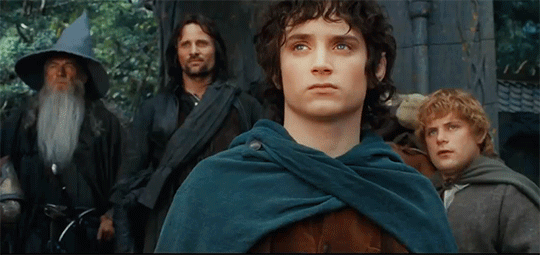
Although, I can’t call myself a hardcore fan. I’ve never read the Silmarillion, for example. Although, weirdly, I wanted it as a kid at some point, so I was almost there. But no, I ended up getting into comic books hardcore instead, so I can’t tell you the history of Tom Bombadil, but I can tell you about at least one of the fuckin’ 87 tieles that the Legion of Super-Heroes has been involved in. I’m not gonna like it though.
...Yes, I will, who am I kidding, I love the Legion. Anyway, I’ve still always been a fan of the franchise, and I was extremely excited when Jackson announced that he’d be doing an adaptation of The Hobbit! Seriously, I WAS FUCKING PUMPED, you have no idea. I re-read the book, I was super-excited...and then Harry Potter changed EVERYTHING. Kind of.

See, Harry Potter’s development as a two films made from one book seemed to kick off a trend. Breaking Dawn and Mockingjay are the two that immediately come to mind, as does this film. However, to be fair...that’s probably a coincidence. Yeah, this film was originally developed as two parts, WAY before Deathly Hallows got that treatment. And even then, Jackson and Del Toro had difficulty breaking it up into two parts, and three ended up being easier. Still...the change from two-to-three does feel a little connected to that trend.
Anyway, in celebration of that decision, I’m gonna break this review into three parts! Yes. Really. I want to see if it works. And so, let’s talk about the other most famous adaptation of this book by talking about its creators.
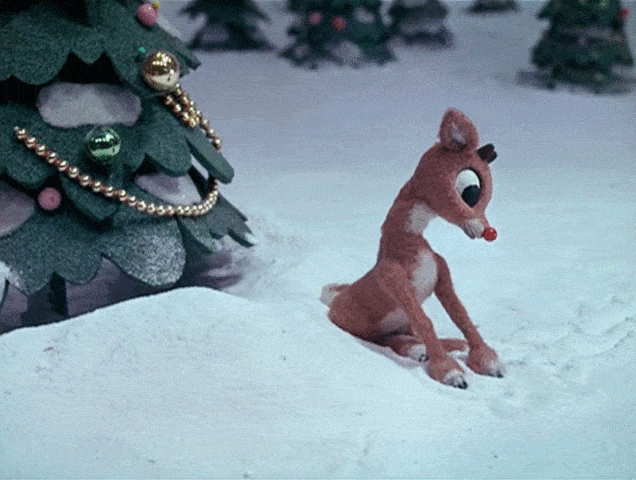
Yup. Rankin-Bass did 2D-animated cartoons, too! And this was one of their most famous ones, dating back to 1977. But wait! There’s more! This was followed by Ralph Bakshi’s version of Lord of the Rings by a different studio. You know, this one?

Yeah, that one. It was only based on the first two books, Fellowship and Towers. But it was technically unconnected to the Rankin-Bass version. Which is why it was REALLY weird when Rankin-Bass came out with an adaptation of the third book, Return of the King, right afterwards!
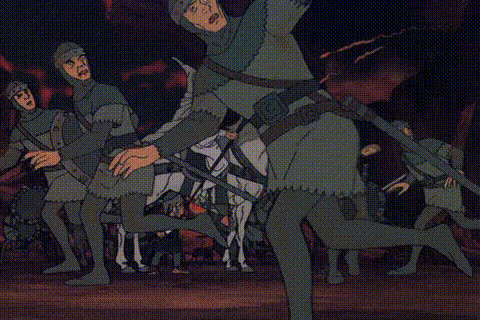
BUT WAIT THERE’S MORE. Because both of Rankin-Bass’ specials were animated by a Japanese studio called Topcraft, who’d actually worked with Rankin-Bass for years. But then, they went bankrupt a few years later, and was bought by Isao Takahata, Toshio Suzuki, and...Hayao Miyazaki. And it was renamed as...
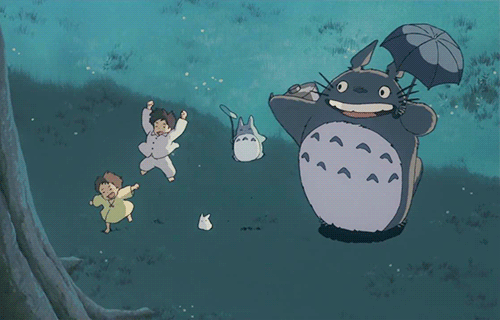
So, this is a Hobbit adaptation produced by the Rudolph people and animated by the people who would eventually become Studio Ghibli. Well, uh...holy fucking shit. Let’s DO THIS BABY. SPOILERS AHEAD!!!
Recap (1/3)

As we’re wont to do in this story, we head to Hobbiton in the Shire, where we meet Bilbo Baggins (Orson Bean). A simple Hobbit in a simple home, with a happy and simple life. But one day, he’s approached by Gandalf (John Huston), who seeks a burglar to help with the mission of a group of dwarves, led by Thorin Oakenshield (Hans Conried).
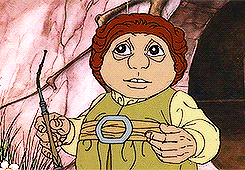
We also immediately start off with two songs from the original book, and I have to say that I like them a but better in the Jackson movies, but they’re still well performed here. Anyway, after dinner, the true goal of their quest is given. Beneath Lonely Mountain, the ancestral home of the Dwarves, there was a kingdom ruled by the King Under the Mountain, Thorin’s grandfather.
Through reading the lyrics of the song “Far over the Misty Mountains,” Thorin tells the tale of the takeover of the Dwarves’ great golden hoard by the dragon Smaug. Bilbo is tasked to help the Dwarves steal back the treasure stolen from them. And, while he’s extremely reluctant to be a part of all this, Gandalf basically forces him to, the pushy bastard. And Bilbo’s Greatest Adventure now lies ahead!
youtube
Speaking of, here’s the song “The Greatest Adventure”, sung by Glenn Yarborough, who is the living personification of vibrato. Fuckin’ seriously, this guy’s voice is ridiculous, but I love it so much. As the night passes underneath Glenn Yarborough’s hypnotically shaky voice, and uncertain, Bilbo stares out at the moon. Once it’s over, we’re on our way to the Misty Mountains.
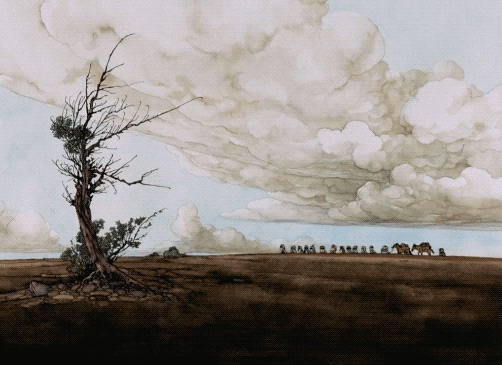
Bilbo’s having a tough time with the long journey and rough weather, and it doesn’t get much better when they encounter a trio of trolls. They send out Bilbo to try and steal some mutton from them, but he’s IMMEDIATELY a failure, and also manages to tell the trolls that the dwarves are present. Nice one, Bilbo. The trolls catch all of the dwarves, although Bilbo manages to escape.
The trolls argue about how to cook the dwarves, but before they get to do anything, Gandalf shows up and summons the dawn, turning the trolls into stone and saving the dwarves. While they’re initially quite frustrated by Bilbo’s failure, he makes it up by discovering a horde of goods and weapons stolen by the trolls. This is also where Bilbo gets his classic weapon, Sting.
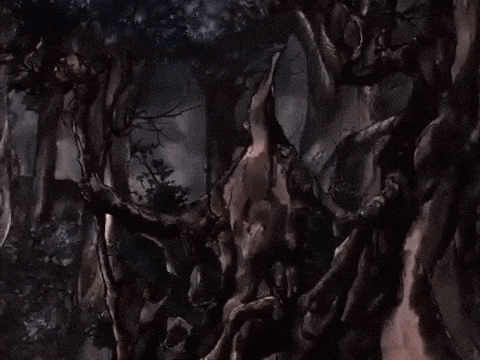
Gandalf, cheeky bastard that he is, suddenly reveals a map that he’s kept secret from Thorin, its rightful owner. Bilbo, a classic cartomaniac, is able to interpret the map. But there are also runes that they can’t quite read. And so, Gandalf brings them to his friend, Elrond (), who’s wearing a sick-ass glittery tiara that’s hovering off his head. How come Hugo Weaving didn’t have that?
Anyway, Elrond identifies the swords that Thorin and Gandalf grabbed as Orcrist, the Goblin-Cleaver and Glamdring, the Foe-Hammer, because FUCK YEAH, BABY, those are some fuckin’ NAMES! WHOOOOOO!

Anyway, he also points them in the direction of the mountain, and shows them hidden features to the map. They head through the mountains after this, and rest in a cave. Unfortunately, this cave is on Goblin territory, and the group (sans Gandalf, who’s disappeared to make out with Cate Blanchett or whatever) is quickly ambushed by a group of now-horned Goblins, who chant their song as they go “Down, Down, to Goblin-Town”. Which is a song that I love, unironically. It compels me to sing along.

The Goblins nearly kill them when they discover Orcrist in Thorin’s possession, but they’re saved by the sudden appearance of Gandalf with the glowing sword Glamdring. He kills the Great Goblin, and the group run out with the Goblins in hot pursuit. Well, except for Bilbo.
Yeah, Bilbo falls into a cavern below the mountain, and the dwarves think him gone for good. However, he’s miraculously safe on the ground, having landed in an underground aquifer, in which lives THE GREATEST CHARACTER IN THE MIDDLE-EARTH FRANCHISE FUCKIN’ AT ME I DARE YOU

And just so we’re clear, I’m not talking about the film version only, I’m talking about Gollum/Smeagol in general. Granted, I don’t want a film starring him or anything (coughCruellacoughcoughMaleficentcoughcoughClaricecoughcough), but I love this dissociative little dude so much. He’s one of my favorite fantasy characters in general, and is also maybe the best example of a sympathetic villain, in film at least.
OK, to be fair, I love Andy Serkis’ version of the character a LOT, like a LOT a lot, and it’s a great version of the character. OK, so what do I think of this version? He’s...interesting, actually. If I’m honest, I kinda like him. This is similar to how I always pictured Gollum when I was a kid.

I mean, listen to this description from the book, yeah?
Deep down here by the dark water lived old Gollum, a small slimy creature. I don't know where he came from, nor who or what he was. He was Gollum - as dark as darkness, except for two big round pale eyes in his thin face...He was looking out of his pale lamp-like eyes for blind fish, which he grabbed with his long fingers as quick as thinking.
I dunno, that does sound more like this version of Gollum to me, just saying. Anyway, while Gollum is off fishing in the water, Bilbo gets up on the shore, where he finds a little golden ring Not important, just a ring, definitely means nothing at all, NOTHING AT ALL, NOTHING TO SEE HERE.

The hungry Gollum (Brother Theodore) happens upon Bilbo, precious, wonders if Bilbo would taste good, and is basically about to kill him for his sweet hobbit meat, before Bilbo takes out Sting. Now afraid, Gollum offers a game of riddles. The two make a deal: if Bilbo wins at a game of riddles, Gollum will show him the way out. But if Gollum wins, precious will eat him raaaaaaaw and wrrrrrrrrrriggling!
The riddles commence, in a super-fuckin’-classic moment, and also ends with maybe the most bullshit moment in all of fantasy lore. After clever riddles with answers involving eggs, wind, and time, Bilbo’s last riddle is “What’s in my pocket?” The fuck, Bilbo, that’s absolute BULLSHIT!

Not that it matters. Bilbo wins, but Gollum goes to find his ring to show it to Bilbo before he takes him away. Thing is, though, that’s what was in Bilbo’s pocket, which Gollum quickly figures out, my precious. He’s about to kill Bilbo to get back his birthday present, precious, but Bilbo discovers the secret trick of the ring: it turns the wearer invisible, AND THAT WILL NEVER BE A BAD THING EVER.
Gollum thinks that Bilbo’s escaped and runs after him toward the exit. This, of course, leads Bilbo towards the exit inadvertently, and he follows Gollum, then jumps over him to get back. To which Gollum screams the following:
Thief! Thief! Baggins! We hates it! Hates it! Forever!
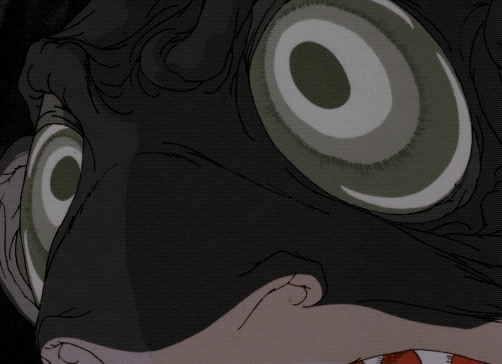
I hear you, buddy. I hear you. Well, once Bilbo escapes, he reconvenes with the rest, and shares his adventure in the cave, but leaves out the ring. And Gandalf seems to know, based on his dialogue. And I checked, and he figured it out in the book and Jackson movie, too. And I gotta say...WHAT THE FUCK GANDALF

I mean...DUDE. CHECK UP on that shit. Do you wizard job, man! If you’d been like, “Dude...you didn’t find a magic ring that turns you invisible, ight, because we’re FUCKED if you did”, NONE OF THE LORD OF THE RINGS WOULD’VE HAPPENED, AND BOROMIR WOULD STILL BE ALIVE
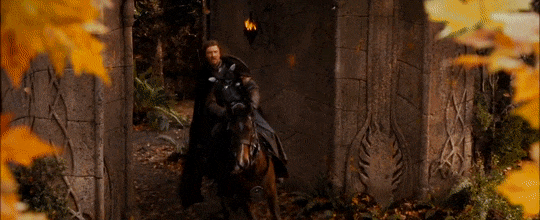
Everybody talks about the fuckin’ eagles, but WHY DO I NEVER HEAR ANYONE MENTION THIS SHIT? Gandalf the Grey: Middle-Earth’s most irresponsible asshole, I swear...
This seems like a good place to pause, actually. See you in the next part!
#the hobbit#the hobbit 1977#rankin-bass#orson bean#bilbo baggins#thorin oakenshield#john huston#gandalf#otto preminger#cyril ritchard#brother theodore#gollum#don messick#paul frees#glenn yarbrough#j.r.r. tolkien#rankin bass#hans conried
14 notes
·
View notes
Text
Clarisse & The Lord of the Rings
“War must be, while we defend our lives against a destroyer who would devour all; but I do not love the bright sword for its sharpness, nor the arrow for its swiftness, nor the warrior for his glory. I love only that which they defend.”
When she was 12, Chiron noticed that she was the only year-round Ares girl. He pulled her aside one day and offered her a room in the Big House for herself, figuring she could use some privacy and alone time from her brothers.
The room had a small TV and DVD player in it, and she had the only key to the room. She could use it when ever she wanted, as long as it wasn’t during training or school work.
That’s where she found The Lord of the Rings extended edition DVDs. She watched all of them in two days.
She cried when Boromir died, but nothing prepared her for the raw emotion of this scene from The Two Towers . She thinks about this scene constantly, and it’s probably her favorite scene from any of the movies in the long term. The only scene that rivals it is the Battle for Osgiliath in The Return of the King.
What really fucked her up though, was the Battle for Osgiliath/Pippin’s song from Return of the King. That scene made her realize, more than anything she’d encountered before, the ways in which war, while it can sometimes be comprised of glorious moments of good triumphing over evil, it could also be comprised of moments of leaders gluttonously and recklessly consuming those willing to fight for them.
After she watched all the movies all the way through, she asked Chris to re-watch them with her. He agreed, because she was his best friend. She didn’t expect to cry at all, because she knew what would happen, but she cried twice, once at the Sam scene in The Two Towers, and "I can’t carry it for you, but I can carry you!”. Chris didn’t judge her.
When Chris was really sick, she would sometimes sing “The Edge of Night” to him, and it would calm him down.
Chiron had large text print copies of the books, which he gifted to her.
She read them all in one summer. She rereads them every summer. They’re ear marked and annotated to death.
While she always loved Faramir in the movies, when she read his line: “War must be, while we defend our lives against a destroyer who would devour all; but I do not love the bright sword for its sharpness, nor the arrow for its swiftness, nor the warrior for his glory. I love only that which they defend.” She was so overwhelmed that she had to lie down.
Tolkien’s ideology, philosophy, and stories have shaped her understanding of war, its purpose, and its consequences.
Her favorite part of the main three books is the scouring of the Shire, because it is the part that helps her cope with the war the most. Camp had always been her home - her idyllic home where she could be herself, study at her own pace, and train as much as she wanted. But after the war, it had been changed. Thalia’s tree had been poisoned, people had died there, and it was no longer the same place it had been in her childhood. But she had also been changed by the war. Like Frodo, she felt like there wasn’t a way to remain in the place after a while - she couldn’t go home again. Unfortunately for her, there are no undying lands for her to sail to.
Her favorite book is The Silmarillion. When people (read: annoying Athena boys) question this, she just looks them dead in the eye and asks “Oh, I’m sorry, are mythological wars not in my DNA?”
She went to Tolkien’s grave once on vacation and read the tale of Beren and Luthien out loud and left flowers.
Do not talk to her about The Hobbit movies or she will put forks in you. She was nearly kicked out of An Unexpected Journey when Thorin charged at the Orcs at the end because she yelled “THAT’S THE RINGrWRAITHS’ THEME!” and then spent a few minutes explaining to Chris that “thing mean things” and that “the ringwraith theme is a poem written by Philippa Boyens about the wraiths and then translated into the ancient language of man. It’s not just some random, intense battle music!”
She slept through most of Desolation of Smaug. She was so out cold that Chris actually left the theater to walk around the mall for a while. He came back before the end, just in time for her to wake up. “How long have I been asleep?” “Since dwarf barrel boing boing. I brought you a soft pretzel, thought.”
She straight up left the theater during Battle of Five Armies when she heard Thranduil say: “Go north, find the Dunedain. There’s a young ranger among them; you should meet him. His father, Arathorn, was a good man; his son might grow to be a great one. He’s known in the wild as Strider, but his true name you must discover for yourself.”
“Go north? Look at any map of Middle Earth and you’ll see that Erebor is the northern-most kingdom on the map. The only thing north of Erabor is desolate dragon territory. And go north to find the Dunedain? Dunedain literally translates to ‘men of the west!’ Why would you go north into dragon territory to find the men of the west?! And ‘there’s a young ranger among them known as Strider?’ The Hobbit takes place 77 years before the Fellowship of the Ring is formed, which means that Aragorn is TEN! When Aragorn was ten he wasn’t a ranger! He was living at Rivendell! His name was Estel! They didn’t even need Vigo to sign on to the project if they wanted an Aragorn cameo, they only needed some kid with black hair! And he wasn’t known in the wild as Strider! He was known in Bree as Strider, and he didn’t even like the name! This isn’t even deep lore! This is just stuff in the main books and appendices and the maps printed on every inside cover!”
She has three (and a half) Lord of the Rings tattoos.
The first one she gets is a pretty common design: it’s the white tree of Gondor with the shards of Narsil, but she gets the text “Renewed shall be blade that was broken, The crownless again shall be king” around the design. She has this on the inside of her right forearm. She likes this line because in the movies Arwen says them as if they are ancient prophecy, but in the books, Bilbo writes them in a song. It’s a little inside joke with herself.
Some people have asked why she didn’t get the text from the ring itself, and her response is always “It’s an accursed language. Why would I want an accused language on my body?” “it’s a made up language.” “All languages are made up.”
The second one she gets on a bet. She gets a goofy illustration of Gollum from before JRRT republished The Hobbit to be more canon compliant with The Lord of the Rings. She has this one on the inside of her left arm. As goofy as it is, she does love Gollum as a character.

She then has the door to Moria on her ankle.
The half is her drakon tattoo. She has a tattoo designed partially after the drakon and partially after Tolkein’s illustrations of Smaug. The drakon is weaving itself through a hand, so it is proportionally very small. This tattoo is on the right side of her ribcage and was the first tattoo she got (Ares paid for it as a gift).
When she was pregnant for the first time, she played The Lord of the Rings soundtrack and watched the movies a ton deliberately to train her baby to respond to the sounds. Her first kid ended up (by no accident) being calmed by The Lord of the Rings.
However, her favorite book is The Hobbit, and she proudly proclaimed at three years old that she was going to be a burglar when she grew up. Chris was very smug.
(anyway, come talk to me about the lord of the rings @nohomo-mrfrodo) (did I write this whole thing to go on that rant about that line from battle of the five armies. yes, yes i did)
33 notes
·
View notes
Note
Your post on subversion was intriguing. My friend and I were similarly wondering if fans take "fanon" too seriously as it warps their perception of "canon." As in the direction taken, be it by different writers or the same one, goes someplace fans just don't like. What makes it "bad writing" or "fans who just didn't like what they got" exactly? It can feel so... mixed up honestly.
refers to this post [X]
Thank you!!!
I think that fanon has so many definitions that it can be difficult to discuss without being specific

a not-particularly-safe-for-weenies example is Transformers fandom has a particular way of describing cybertronian genitals, in terms of their form, function, and terminology, that is widely (though not universally) used in fic, despite not being part of the established lore
that’s what happens when fanon is created to be lore-conforming but to address something that is not (or cannot be) directly discussed within the media itself

sometimes, fanon is about taking a hammer and fixing canon because it’s broken
for example, though it’s frankly the least of her problems when it comes to worldbuilding, JK Rowling can’t do math. it’s never clear how many students attend Hogwarts, but her overly simplified small number of magical schools throughout the world really shows that she just … didn’t crunch the numbers
I could go on about how to figure out proportions of mutants/wizards/vampires etc, but the issue here is that fans basically have to ignore this new lore because it’s absurd. that doesn’t mean that there’s a newly established fanon for HP international schools, but one day, there might be
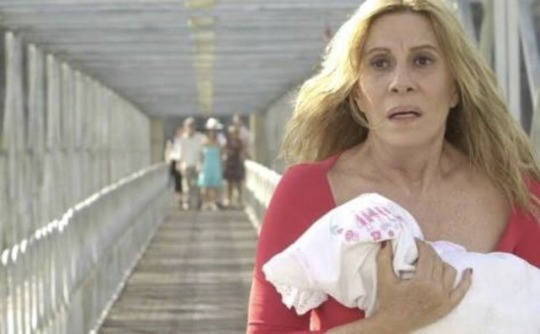
sometimes, fanon takes a very different turn, when fans far and wide commonly accept what’s called “woobification“ of a character
Snape, Loki, Kylo Ren, Damon Salvatore. these are all fine characters to like if you so choose (I’m obsessed with Sheev Palpatine; I get it), but sometimes people will try to justify that fondness by pretending that the character is someone wildly divorced from their actual morality
I don’t want to talk about any given character, and inconsistent writing can also be a factor, and also not all of the characters I just listed are on equal moral footing by any means. but sometimes the fanon version of a character is unrecognizable because they’re a much better person than their canon counterpart

fandom expectations can be extremely difficult to manage and even to predict. if fans come up with their own ideas about how a story should end or what sort of dynamic a pair of characters have, that can come into conflict with what ends up happening in the story
unfortunately, there’s no single, hard-and-fast rule for what makes a good story vs what makes a bad one
in my previous post (linked to at the top of this post), I talked about how telling a good story is like setting up a marble ramp or a series of dominoes, where all of the pieces should be in place to get you to the ending you desire. if you have to flick over a second domino or pick up the marble and deposit it somewhere else – that is, force characters to do something that neither personality (marble) nor circumstances (ramp/obstacles/etc) support – then you’ve made a mistake. audiences will usually notice
sometimes, fanon ideas of who a character is can influence fans, which lead them to do the pikachu-surprise-meme when a canon portrayal remains consistent. but sometimes, there are other factors, such as a likeable actor. Alan Rickman was a good guy, but Severus Snape was not

this may seem like a tangent, and perhaps it is, but sometimes authors and other storytellers try to impose their own, incorrect, moral view of the world in their stories.
Jolkien Rolkien Rolkien Tolkien himself used Gandalf to tell the Frodo (and the reader) that it would be morally wrong to simply execute Gollum rather than kill him in self-defense or battle. this pays off later when Gollum’s avarice destroys the One Ring and saves Middle Earth (spoilers!). this only works out this way because JRRT, who is catholic, told that story, not because it’s always the case that the person whose life you spared will accidentally save the day later.
another great example is JKR declaring that Snape is a hero. I won’t get into her odd treatment of Slytherin, and this may fall under the I Will Fix Canon With Hammer type of fanon, but I think that we all know that she bent over backwards to vilify Slytherins just as she did with fat people (except the ones who were just foolish)
nothing that JKR says can make Snape a good person unless she tells us that the dialogue that he spoke and the actions described on the pages were just … lies she told us for some reason. writers can control the very laws of reality of their worlds, but right and wrong are what they are
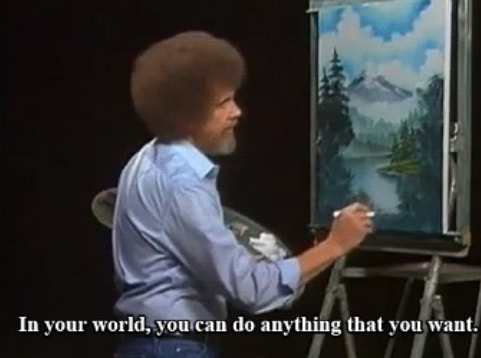
anyway, I absolutely agree that what fans want to see can come into conflict with what the storyteller gives them, and that it can create an unfair backlash
by that same notion, sometimes storytellers will dismiss fan concerns over bad writing (inconsistent characterization, rushed storylines, etc) and blame “fan entitlement.” that’s a real thing, but it’s the people who rage angrily and lead review-bombing campaigns – not the people who hate seeing their favorite characters murdered by the writers (and sometimes, by other characters) because it was poor writing
I love-love-love Mass Effect Andromeda, but I know that some fans of the series did not. that does not make them bad fans. sending hate to a developer or to people who enjoyed it would make them a bad fan
bad fan behavior comes from actual behavior, not what they think about a piece of media
and as for telling the difference between bad writing and fans disappointed by a solid narrative? I mean, my marble example shows one part of what I think defines good vs bad writing. mostly, we just have to figure out for ourselves if a choice made us sad or if it was actually bad
#writing#fanon#storytelling#I hope that this is helpful anon sorry that it's so long#anon ask#anon#ask
5 notes
·
View notes
Text
Interview with Angela P. Nicholas--author of "Aragorn: J.R.R. Tolkien's Undervalued Hero"
We were very excited to have the opportunity to interview author Angela P. Nicholas. Her book "Aragorn: J.R.R. Tolkien's Undervalued Hero" is an extremely detailed, in depth examination of Tolkien's Aragorn--his life, his relationships, his achievements, his skills, and his personality. It is a very worthwhile addition to any Tolkien library. She has some fascinating insights into Aragorn, book vs movie representations of the character, thoughts on the upcoming Amazon series and fan fiction as part of the Tolkien fandom. Hope you enjoy reading it!
1. How did you first become interested in Tolkien?
Answer:
Although The Lord of the Rings was very much in fashion during my student days in the late sixties and early seventies I wasn't interested in it at that stage – probably because I didn't tend to follow fashions! It was not until a few years later, in 1973, that a friend persuaded me to read it. He stressed that it would be a good idea to read The Hobbit first and promised me that I was "in for a treat". I was hooked immediately and when I got together with my future husband soon afterwards I wasted no time in introducing him to Tolkien's works as well! I re-read The Hobbit and The Lord of the Rings several times during the seventies and bought The Silmarillion as soon as it was published in 1977. Further readings have followed since, especially while working on Aragorn, extending to Unfinished Tales, the twelve volumes of The History of Middle-earth and Tolkien's Letters as well.*
2. Aside from reading the books, have you had any other immersion in the Tolkien fandom? Online, through societies, other venues?
Answer:
My Tolkien-related activities include membership of the Tolkien Society since 2005, leading to attendance at Oxonmoot (most years) plus a number of AGMs, the occasional seminar and the event in Loughborough in 2012. I've contributed several articles to Amon Hen and also gave a talk about Aragorn at Oxonmoot a few years ago. In addition I attend meetings of my local smial (Southfarthing) which is actually a Tolkien Reading Group.
3. There are so many richly written, deeply compelling characters in Tolkien. How did you decide to focus on Aragorn?
Answer:
There wasn't really any decision to make, as right from the start I found Aragorn the most complex and appealing character in the book. Every time I re-read The Lord of the Rings - including delving into the Appendices - I found new depths to his character and significance.
4. What prompted you to write this book? How did the impetus to write about him, in such rich detail, come about?
Answer:
The actual impetus came from Peter Jackson's Lord of the Rings films. Although I enjoyed his portrayal of Aragorn in some ways, it was clear that there were significant differences between the film and book versions of the character. For my own satisfaction I decided to re-discover Tolkien's Aragorn by studying all the Middle-earth writings and making detailed notes on anything of interest. I did not, at that stage, see myself actually writing a book.
5. Did you initially plan such an exhaustive and detailed study of this character, when you first decided to write the book?
Answer:
No, I didn't envisage anything so detailed. It just got out of hand: the more notes I made the more ideas I had and the thing just grew exponentially!
6. The title makes use of the word ‘undervalued’—how do you define that in terms of Aragorn and how did you come to associate that word with him?
Answer:
While studying Aragorn it became clear to me that his role in the story is a lot more significant than is immediately apparent. This is partly because the book is “hobbito-centric”, to use Tolkien's own word [see end of Letter 181 in The Letters of J R R Tolkien edited by Humphrey Carpenter], so is largely written from the hobbit viewpoint. For this reason Aragorn's ancestry and earlier life are only described in the Appendices, which not everyone reads. Thus his deeds - and their significance - are often overlooked, causing him and his role to be undervalued. Chapter 1.5 of my book in particular aims to address this problem by concentrating on the story of The Lord of the Rings from Aragorn's point of view. He does many crucial things behind the scenes, for example: the lengthy search for Gollum; standing in for Gandalf as shown by the secret vigil he conducts over Frodo during the months before the latter's departure from the Shire; and - the most significant achievement - confronting Sauron in the Palantír of Orthanc thus implying that he himself has the Ring and so diverting Sauron's attention away from Frodo.
7. If you were to consider writing a similar book about another character from Tolkien’s legendarium who would you choose to focus on?
Answer:
I find Finrod Felagund, Galadriel and Elrond interesting, especially in the light of their impact on Aragorn and his ancestry. Among the hobbits, Merry Brandybuck is rather appealing. However I have to say that I am not planning to do another book on this scale!
8. What were your thoughts on the portrayal of Aragorn in Peter Jackson’s Lord of the Rings movies?
Answer:
Given “book” Aragorn's lengthy struggle to regain the kingships of Arnor and Gondor and to be deemed worthy of marrying his beloved Arwen, it was extremely disappointing to be presented with the image of “Aragorn the reluctant king” who breaks off his engagement so Arwen can sail west.
In general I felt there was too much emphasis on Aragorn as a fighter, along with almost total neglect of his formidable healing skills, impressive foresight and knowledge of history and lore.
Another great disappointment was the omission of the challenge to Sauron in the Orthanc Stone. Yes, this incident was included in the extended version of The Return of the King, but it appeared in the wrong place and also gave the impression that Aragorn lost the confrontation. (The credit for seeing the enemy's plans in the Stone was actually given to Pippin!)
In addition I found the beheading of the Mouth of Sauron particularly disturbing.
9. Did you find Viggo Mortensen believable and appealing as Aragorn?
Answer:
In spite of my answer to the previous question I liked Viggo Mortensen's performance. He did actually look something like my image of Aragorn and he seemed to capture the sadness, remoteness, physical courage and protectiveness I associate with the character. Basically I thought that Mortensen did very well with the part he was given to play - but the part was not that of Tolkien's Aragorn!
10. Amazon has bought the rights to the appendices of the Lord of the Rings and is planning a 5 part series. Rumor has it that the first season will focus on young Aragorn. What do you hope to see in this adaptation and are there any particular incidents/scenes/events that you think merit particular attention or inclusion?
Answer: The following seem to me to be important:
- Putting Aragorn's early life in the context of “Estel”, the Hope of the Dúnedain, who has been prophesied to be the one who will atone for Isildur's failure to destroy the Ring, and who will restore the kingship of Men.
- Some emphasis on his family members: Ivorwen, Dírhael, Gilraen, the death of Arathorn, subsequent fostering by Elrond, and training by Elladan and Elrohir. Some indication of the close relationship with his foster-father would be good: Elrond loved Aragorn as much as his own children but this was not made apparent in the Peter Jackson films.
- The scene when Elrond tells the 20-year-old Aragorn his true identity.
- First meeting with Arwen
- Friendship with Gandalf from age 25 onward
- Betrothal to Arwen, and Galadriel's involvement: he was 49 by this time, so that may not be considered part of his early life (though 49 would be young for one of the Dúnedain!)
- Perhaps some reference to the events of The Hobbit in 2941-2 when we know that 10/11-year-old Aragorn was living in Rivendell.
11. What do you find most inspiring about Tolkien’s world?
Answer:
The depiction of such a complete and seemingly realistic world, and the fact that one can pick up extra hidden depths in both story and characters on each re-reading. There is always something else to discover or a new interpretation of a familiar passage.
12. Are you involved in any more projects involving Tolkien?
Answer:
Not at the moment. I have one or two ideas for possible short articles.
13. What advice would you give to those first encountering Tolkien’s work and wanting to learn more about Middle-earth and its inhabitants?
Answer:
Speaking from my own experience I would say: Read The Hobbit first then The Lord of the Rings several times, including the Appendices, before delving into other works: The Silmarillion, Unfinished Tales, The History of Middle-earth and Tolkien's Letters, plus critical works, etc. - and of course online sources which were not available when I first became interested in Tolkien.
14. In the preface to your book you mention discovering the online Tolkien fanfiction community—what are your thoughts on Tolkien fanfiction? What time frame was this and did you join the fanfiction community at that time?
Answer:
I started writing fanfiction during 2003 and continued doing it until about 2007 which was when I made the decision to write a serious work about Aragorn. One piece of fanfiction appeared in Amon Hen, and the rest on a couple of websites which I think no longer exist.
My main thought about fanfiction is that it was this which started me off writing. It was very much an experiment as my last attempts at creative writing dated back to my school English lessons in the 1960s! Without trying the fanfiction first I don't think I would ever have got round to writing articles for Amon Hen, let alone my book.
15. Did encountering fanfiction or even writing it have an effect on your thoughts on Aragorn and the salient points of his character that truly defined him?
Answer:
Yes - because the chief aim of the fanfiction (mine and, I suspect, that of other fanfiction writers) was to fill in the gaps in Aragorn's story. I scoured the text for possible motives and feelings of the people I was writing about. My fanfiction was always based on the “book” version of the story and characters (never on the film version). I did sometimes use invented characters but only to add detail and interest to the story. For exampIe this approach was used when writing about Aragorn's Rangers and when describing his interactions with the inhabitants of Bree. Some stories were actually based on invented characters, in order to try and see Aragorn through the eyes of others. This probably helped me when writing the “Relationship” chapters [see next question.]
16. One aspect of your book that to me is truly unique is Part 2, where you study and interpret his interactions and relationships with the other races and individuals he encounters in Middle-earth. What made you decide to pursue this format?
Answer:
It just seemed the most logical approach. I couldn't study Aragorn's relationships properly without also studying the other half of each different relationship. There was so much to be revealed about both parties in these studies, many of which were based around families and generations (such as in Rohan, and Gondor, and in the Rivendell and Lothlórien communities).
17. Aragorn as a character brings together elements and bloodlines from the First Age into the Fourth Age—you outline these genealogies and relationships quite thoroughly in your book. How do you think this knowledge of his genealogy affected him in his transition from youth to Ranger to King? Is there a character from the earlier Ages that you think had a more significant impact on him or that he resembles the most in character?
Answer: Aragorn would presumably have learnt about these people as a child during his history lessons, but would not have connected them specifically with himself until he was made aware of his true identity at the age of 20.
Elendil, Isildur and Anárion stand out as the obvious significant ancestors whom Aragorn would have striven to emulate - plus, in the case of Isildur, also to atone for his failure to destroy the Ring.
Other ancestors who may well have inspired admiration and/or gratitude in Aragorn include:
- Elendur the self-sacrificing eldest son of Isildur. A passage in Unfinished Tales refers to Elrond seeing a huge similarity between Elendur and Aragorn, both physically and in character. [See footnote 26 at the end of The Disaster of the Gladden Fields.]
- Amandil, the father of Elendil, who advised his son to gather his family and possessions in secret and plan an escape from Númenor in the event of a disaster, before himself courageously setting out for the Undying Lands to plead for mercy for the Númenóreans. He was never heard of again, but the Númenórean race was saved due to Elendil's successful escape to Middle-earth after following his father's instructions.
- Tar-Elendil the 4th King of Númenor and his daughter Silmarien. The royal line of Númenor and its heirlooms only survived via this female line.
- Tar-Palantir the penultimate King of Númenor who resisted the influence of Sauron and tried to turn the Númenóreans back to friendship with the Eldar.
Another notable ancestor for a different reason was Arvedui, the last King of the North Kingdom, who tried to claim the throne of Gondor as well but was rejected and ended up losing both kingdoms before fleeing to the frozen north where he died in a shipwreck. Aragorn must have regarded his own mission to reunite the two kingdoms just over 1,000 years later with some apprehension.
Ar-Pharazôn would clearly have served as a dire warning!
I wonder if Aragorn felt any unease about his namesake, Aragorn I, being killed by wolves!
A comment in Appendix AI(i) of The Lord of the Rings states that the Númenóreans came to resent the choice of Elros to be mortal, thus triggering their yearning for immortality and their subsequent downfall. Did Aragorn ever resent his ancestor's choice? Personally I think he would have had the knowledge and wisdom to understand Ilúvatar's purpose in reuniting the immortal line of Elrond with the mortal line of Elros (through the marriage of Arwen and Aragorn) in order to strengthen the royal line prior to the departure of the Elves and the beginning of the Age of Men.
18. What are your thoughts on the original premise that Aragorn was Trotter, a hobbit?
Answer:
Eeek! The grinning and the wooden shoes! I don't think that the book could possibly have had the same impact, depth and sense of history if the main characters had all been hobbits. I seem to remember that the name “Trotter” still survived for a while after he became a man. “Strider” sounds much better. I'm so glad Tolkien didn't pursue the original idea.
19. Do you have any advice for budding Tolkien acolytes and scholars who are first delving into the legendarium?
Answer:
Read and re-read, record thoughts, ideas, passages worth quoting. Read what JRRT wrote and what others have written. This worked for me, over a very long period - more by accident than design.
*this answer is the same as Angela's answer in the Luna Press interview with her as it has not changed! Take a look at that article for more information on Angela and her book. https://www.lunapresspublishing.com/single-post/2017/09/04/Aragorn---A-Companion-Book
Interviewed by @maedhrosrussandol
July 14th 2018
45 notes
·
View notes
Text
Lord of the Rings: The Story of an Entrepreneur
(If you did not watch or read the Lord of the Rings trilogy, things I will mention in my blog will make no sense to you. Also, come on… You didn’t watch that masterpiece yet? You need to. Otherwise, you will get spoilers. *SPOILER ALERT*)
In a previous blog that I wrote, I mentioned “3 Idiots” as my favorite movie of all time (and now I remember that we deleted that part). But for me, that’s because the Lord of the Rings trilogy is in a completely different class than movies. I probably watched complete trilogy more than 5 times; and every time I watch the extended version, I notice something new.
There are lots of myths about the Lord of the Rings trilogy. Some say that J.R.R. Tolkien got influenced by Norse mythology, some say he got ideas from Epic of Gilgamesh and some even say that he got influenced by early nomadic Turkic tribes while creating orcs. But today, we will assume that he foresaw entrepreneurs and their problems.
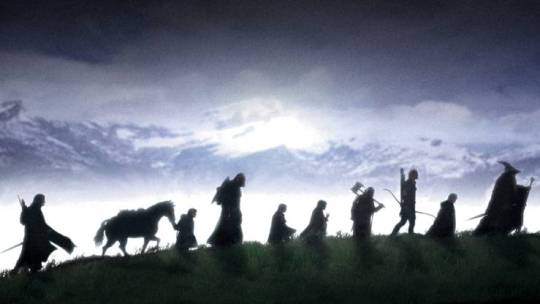
The main characters and their roles in your startup
I think almost all of the main characters in the Lord of the Rings can be applied to a startup in various ways. I will tell about them in detail and what you can learn from them in the following paragraphs.
Samwise Gamgee = The Founder
Frodo Baggins = Your Product
The One Ring = Your Growth Strategy
Merry and Pippin = Your Team
Aragorn, Legolas, and Gimli = the Accelerator Team
Gandalf = the Mentor
Lord Elrond = the Investor
Sauron = the Corporate
Gollum = Your main competitor
It starts to make sense now. Right? There are a lot of side characters that you encounter on your way to success, but we will talk about them later.
Main Characters
Gollum, the Fuckup Story
You might be asking “Why are you starting with Gollum?”. The reason is that Gollum and ring bearers before him are all bad examples. Gollum came across the One Ring by chance and for that power, he even killed a friend for the love of this Ring.
Gollum has been carrying the ring for ages before he lost the ring. He fell in love with the idea of power that the Ring provided, he didn’t even notice that it is killing him from the inside. One Ring gave him an eternal life, but he was just surviving.
Gollum still had a good side of him, before he was Smeagol. But he lost all of it during the time he carried the Ring. He can be helpful to you, but not to be trusted. You need to stay on your feet during your own journey. He lead Sam and Frodo to a secret path, but that path might lead to Shelob.
Lesson to learn: Do not fall in love with an idea. Fall in love with your business. Learn from the mistakes of other startups who failed while trying what you are trying to do.
Samwise, Frodo and the Ring
If you ask people about the main character of the Lord of the Rings, you will see that most people think that Frodo Baggins is the lead character. But if you ask the real fans of the series, you will probably hear that Samwise Gamgee is “the one”. And also as a fan, I can relate to that.
Story of a founder.
Samwise was the founder of the startup to solve a problem. The problem is that One Ring needs to be destroyed, to give the power back to free folks of Middle-Earth. There is a lot of potential in Frodo, but he is yet to discover. He needs to destroy the Ring with Frodo so that Frodo can be free of his chains. The One Ring is Frodo’s burden, and Samwise needs to carry this burden to lead Frodo to success. Sam needs to carry Frodo to Mount Doom to get rid of the One Ring. Sam takes a leap of faith while in cornfields outside of Shire, as he gets as far away as his home he has ever been.
As you can see from the whole paragraph above, I’m not very fond of Frodo. Frodo is a useless pile of shit without Sam’s guidance. Sam needs to shape Frodo as a character. And one-time he gets so bored of his bad trips that he abandons Frodo, only to save him from death later on.
As the founder (Samwise) of a startup, you need a product (Frodo) and a growth strategy (the One Ring). Your growth strategy is not always a pretty thing. It might help you grow, help you get more people around you, but it is not necessarily the main thing you want out of your product.
I don’t want to name any startups, yet I can use them as an example. One of our beloved startups are trying to create a platform for their customers to use, which aims to be an autonomous system them fulfill their needs. But while they are growing, they are working just like an agency and they are completing tasks for their customers that their platform is supposed to do. That’s their growth strategy. But when they reach enough customers and show people that “their platform can do that”, they will abandon their “working as an agency” strategy and move people onto their platform. They are looking for the day that Frodo throws the ring into the fires of Mount Doom.
Lesson to learn: Your growth strategy is not necessarily a thing you want to do at the end of the day. But if it will move you to the top, you need to go for it.
The Team: Merry and Pippin
Merriadoc Brandybuck and Peregrin Took are overlooked characters in the Lord of the Rings trilogy. They are friends to Frodo and Samwise, but they were not supposed to join the journey of the One Ring. Their paths have crossed with Sam and Frodo and the situation made them form a team. Another interesting fact is that in LotR lore, Merry was aware of the One Ring, way before Frodo and Sam started their journey. Merry saw Bilbo use the ring once and then read Bilbo’s journal to learn more about the ring, But he kept this information to himself, probably thinking that no one would believe him.
In the movies, Merry and Pippin were the ones who took care of Frodo, Samwise and the Ring at the beginning. While Ringwraiths were following them in the woods, Merry and Pippin got them out of a sticky situation. Merry and Pippin was not parted with Frodo along the way, even in the council that formed the Fellowship of the Ring. They even brought down Saruman without help from anyone but Ents, that they convinced that Saruman is hurting their forest.
They have fuckup stories as well, of course. You remember the fire atop Weathertop? Because of their foolishness, Ringwraiths found their place, but thanks to Aragorn, they got out alive. And the reason they got alive was that Aragorn convinced Arwen to help them.
They fought for Frodo till the very end and they did everything they can for Frodo. Did they cause problems? Definitely.
Lesson to learn: Pick guys who believe in you and can give everything they have on your way to success. They don’t need to be superstars at the beginning but have the potential to be one. It’s not the size of the dog in the fight, it’s the size of the fight in the dog.
Gandalf, the Mentor
Gandalf is the superstar of Middle-Earth. He has a mighty beard, a cool-looking staff. He can talk to butterflies and call-in giant badass eagles. But he has experience that no other mortal can provide, and that’s his main thing in the movies. You would love to have someone like Gandalf in your team.
Rather than taking the Ring for himself, he brings together Sam and Frodo for this opportunity (or burden). He believes that together, they can destroy the Ring, but he is also aware that they will need help along the way. He helps form the Fellowship of the Ring, which can lead the quest to success. Gandalf helps the team of Hobbits meet with “big guys”.
At the end, Sam and Frodo needs to take the journey. Even if they got a lot of help, and certainly would fail without it, they got to Mount Doom by themselves.
Lesson to learn: You need experience on your way to success. A mentor can talk the talk, yet you have to walk the walk.
Lord Elrond, the Investor
After first funding from Lord Elrond.
Lord Elrond is also one of the overlooked characters in Lord of the Rings. He is the Lord of Rivendell, home of the Elves, and he believes in Sam and Frodo. The reason why is that he believes with his investment in them, they can defeat Sauron by destroying the Ring. So he calls his friends (I know, I know. Dwarves) for aid in this quest. As he also wants to destroy Sauron, he gives a shot to the Fellowship of the Ring. He knows it is not easy to defeat Sauron on a battlefield. That’s why he also doesn’t want the ring in Rivendell. He doesn’t want to piss off Sauron (for now).
In the past, he was in a team which reached the top of Mount Doom and was so close to destroying Sauron for good. Yet his team was not up to the task and rather than following his instincts and experience, he let it slip.
Lesson to Learn: An investor can help you meet with right people and those people can guide you to your success. He may have valuable experience and power that you can use on your quest.
The Fellowship of the Ring: Accelerator
Basically the life of an entrepreneur.
We all know that Frodo and Samwise would lose the ring easily to Sauron if the Fellowship wasn’t there. Aragorn, Legolas, Gimli, and Boromir are warriors that can help the Hobbits overcome obstacles on their way. They came across Aragorn while he was still known as Strider in Prancing Pony Inn. Even if they were not very keen on joining him, Aragorn helped them stay alive with his experience.
Except for Boromir, they are all selfless guys who just want Middle Earth to be a better place, so they help Sam and Frodo on their quest. Boromir, on the other hand, wants the power for himself. He thinks that the power of One Ring will be much more helpful for his personal goals.
Lesson to Learn: An Accelerator can put your team and your business on the right path. They also work as one of your team and help you reach your goals faster. (I’m talking about Hackquarters, of course. The article is on our blog. Have you really thought that I would not include Hackquarters in some way?)
Sauron and his Entourage: Big Bad Corporation
Sauron is our bad guy in the movie. He created the One Ring in secret and by distributing his other rings to leaders of Middle-Earth, he became the most powerful guy of his time. He just gave the leaders of Men, Elves, and Dwarves the sense of power and made them his slaves. He lost some of his power as he lost the Ring, yet still controls a lot of power from his prime. Sauron wants back the power, so he sends all of his forces against the people of Middle-Earth, hoping to get the One Ring back.
The One Ring is also dependant on Sauron, which is a pretty bad thing on Sam and Frodo’s quest. But they need to resist his power and use it only when they need it the most.
#JusticeForSaruman #GandalfTheTraitor
Sauron sends his lawyers, accountants, marketing and PR guys after Frodo and Sam. Those Ringwraiths also have day jobs. Do you really think that running a place like Mordor is easy? Of course, Sauron has guys like Ringwraiths to do his bidding. Those poor guys followed Arwen to their Doom so that they can use it as a PR campaign against the Elves. Don’t you remember the news after that river incident: “Ringwraith lives matter”. Also, do not forget barbarian Ents destroying Saruman’s R&D center.
Lesson to learn: Disruptive is a word that startups use a lot. Being disruptive helps you make enemies on your way. You either die a hero or live long enough to see yourself become the villain (What? I love Batman trilogy, too)
Other Characters
Theoden, the Lord that may be of help
Theoden is the Lord of Rohan, who got mindwashed by Saruman to do his bidding. The Fellowship of the Ring (or at least the ones who are left) help him break free of Saruman’s chains. In the end, Theoden helps in the Battle of Minas Tirith, to return the favor for the Fellowship’s help at Helm’s Deep. In the end, he helped them stay alive longer, but if he wasn’t there at Minas Tirith, Aragorn would’ve swept the remaining Sauron forces with Army of the Dead anyway.
Lesson to Learn: Some people may be helpful on your way, but they have their own agenda. Even if they can be of help, they are not necessarily helping you directly. Try to get as much help from them as possible.
Galadriel, the potential Investor
Galadriel is Lady of the Woods. She was a potential investor for the Fellowship as their paths crossed. Galadriel thought about getting the ring for herself, but at the end, she decides that rather than taking it for herself, letting Frodo keep the ring was for the best. She even blessed Frodo with the Light of Eärendil, which helped Sam and Frodo overcome Shelob.
Lesson to Learn: Don’t be shy of meeting people with power. Even if they don’t directly invest to your cause, they may be of help.
Tom Bombadil the “Who?”
Blockchain is…
As a fan of the Lord of the Rings movie trilogy, I’m not very familiar with Tom Bombadil. I’ve read about him, as fans of the books were talking about him a lot. But I agree with Peter Jackson on not including him into the movies. Peter Jackson justified his omission of Bombadil from the film The Lord of the Rings: The Fellowship of the Ring by pointing out that he did little to advance the story, having nothing to do with the Ring storyline, and serving little purpose when it came to getting the hobbits to Rivendell, and putting together the Fellowship.
Tom Bombadil is the “blockchain” of Middle-Earth. Everyone knows about him, they think that he is a crazy but lovable guy. But they don’t know what to do with him.
Lesson to Learn: Don’t include technologies and features to your startup, just because they sound sexy.
0 notes